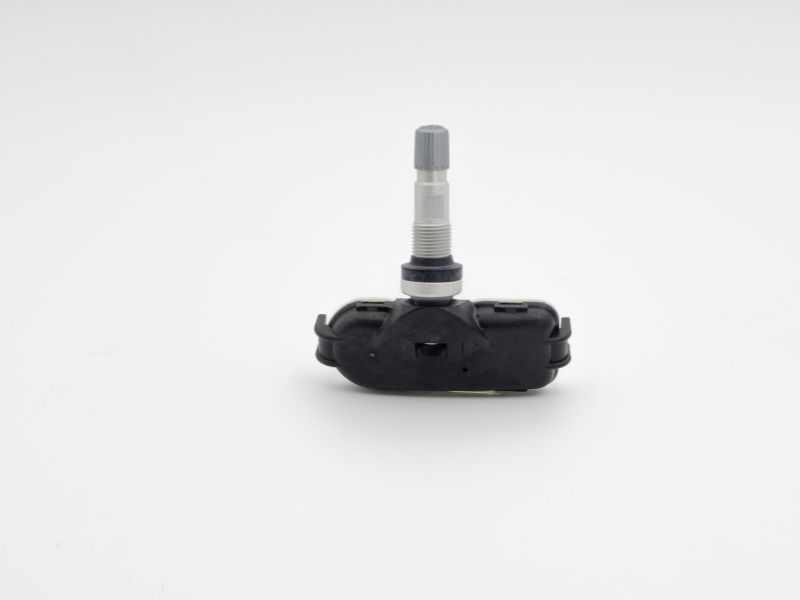The automotive world is filled with acronyms, from acronyms only for certain makes and models to globally used ones and TPMS is one used globally.
TPMS stands for Tire Pressure Monitoring System.
While we now know what TPMS means on a car let’s have a look at how it works and the advantage of having one in your vehicle
What does a TPMS do?
While we know that TPMS means Tire Pressure Monitoring System, what is its main function of it?
In most production cars it is a very basic system with only a warning light that comes on when the tire pressure is below or above the factory-advised pressure.
Some higher luxury cars like Acura can even show you the individual tire pressure of each tire.
You can even install TPMS on a car that never had it as an option with an aftermarket product.
Keep in mind is only to be used as a warning tool and not replace your routine tire checks.

How to get the TPMS light to go off?
When the TPMS light is illuminated it is because one of the tires of the vehicle is below the factory-advised pressure.
The first thing to do is lower your speed to prevent the tire from overheating and delaminating and start looking for a safe spot to stop the vehicle, if you have a tire inflator inside the vehicle search for the nearest open safe space to inflate your tire, if you don’t have a tire inflator and also no spare wheel drive slowly until you find a fuel station or garage that can help you inflate the tire or replace it.
The second step is to inflate the tire to the factory-advised pressure and control if the tire is holding pressure, the warning light will go out in this stage.
The third step is to either continue driving if the tire holds pressure, replace the wheel if it doesn’t hold air with a spare, fix the tire with an emergency tire repair kit, or limp the car to the nearest garage or tire shop to get the tire replaced.
Why is my TPMS light on but the tires are fine?
Each of the pressure sensors, which is located inside the wheel, has small batteries that have a limited lifespan of between 5 to 10 years depending on weather conditions and the quality of batteries used.
If these batteries fail the Tire Pressure Monitoring System can’t read the pressure so it is fail-safe by reading it as below the factory-advised pressure thus the light turns on and will stay on until the batteries are replaced.
Benefits of TPMS
- Due to the vehicle running at the right tire pressure you save a lot of fuel since a deflated tire uses a lot more energy to move than a correctly inflated one. The Department of Transport in the US estimates that underinflated tires waste over 2 billion US gallons (7 600 000 liters) of fuel each year.
- Because the tires are at the right pressure it also extends the life of the tire.
- Due to the tire being at the factory-recommended pressure the vehicle has the best grip, thus increasing, brake, cornering, and stability performance.
- It is environmentally friendly since you are using less fuel for each mile you cover as mentioned above.

Final thoughts on what TPMS means on a car
With the knowledge of what TPMS means and what it does you now know what to do when the light comes on and even if the tires have adequate pressure and it stays on what it means.
Hopefully, you found the article informative and now understand what TPMS means.
FAQs
Can I drive my car with the TPMS light on?
If the tires have the right tire pressure then yes, but it would be advised to have a look at why the TPMS light is on and fix it this can either be a tire that is under or overinflated or a bad sensor.
How long can you drive with the TPMS light on?
If you are driving and the TPMS light suddenly comes on I would not advise driving further than 6 miles (9.7 kilometers).
Find the nearest safest place to pull over and check the tire pressures, the faster you catch a tire deflating the better the chance of saving the tire and greatly decreasing the chance of the tire overheating and delaminating or experiencing a blowout while driving that can cause you to lose control over the vehicle and vehicle damage like scratching your paint.
On the other side, if your tires hold pressure and have the right pressure you can drive indefinitely, it is advised to fix the problem so the system can warn you if you do get a puncture.
Can high tire pressure cause the TPMS light to come on?
Yes, TPMS is designed to warn you in both extremes, low and high pressure.
Too high tire pressures are also dangerous, the vehicle has a lot less grip and if the tire heats up while driving it can cause the pressure to increase so much that there might be a chance of a tire blowout.
How much does it cost to replace TPMS?
Luckily the pressure sensors are something that mostly fails and not the module itself and the sensors price between $80 to $140 for one sensor.
If the module itself fails it will cost between $80 and $500 depending on the make and model.
